Fubon International Conference Center
B2, No. 108, Section 1, Dunhua South Road, Taipei, Taiwan

|
Lot: 601
D: 7.5 cm |
Estimate
220,000 - 320,000 7,000 - 10,200 54,000 - 79,000
|
Sold Price
240,000
7,502
58,252
|

|
Lot: 602
2000 |
Estimate
160,000 - 240,000 5,100 - 7,600 40,000 - 59,000
|
Sold Price
336,000
10,503
81,553
|
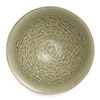
|
Lot: 603
A YAOZHOU DOULI-SHAPED BOWL WITH IMPRESSED PATTERNS OF SEA WAVES AND FISH
Song Dynasty (AD 960-1279) H: 5 cm |
Estimate
200,000 - 320,000 6,400 - 10,200 49,000 - 79,000
|
Sold Price
216,000
6,752
52,427
|

|
Lot: 604
1975 |
Estimate
280,000 - 380,000 8,900 - 12,100 69,000 - 94,000
|
|

|
Lot: 605
1977 |
Estimate
240,000 - 340,000 7,600 - 10,800 59,000 - 84,000
|
|
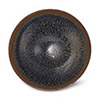
|
Lot: 606
D: 9 cm |
Estimate
300,000 - 500,000 9,500 - 15,900 74,000 - 123,000
|
|

|
Lot: 607
2012 |
Estimate
700,000 - 900,000 22,300 - 28,600 173,000 - 222,000
|
|

|
Lot: 608
1973 |
Estimate
140,000 - 220,000 4,500 - 7,000 35,000 - 54,000
|
|

|
Lot: 609
D: 12.8 cm |
Estimate
700,000 - 900,000 22,300 - 28,600 173,000 - 222,000
|
|

|
Lot: 610
D: 7.5 cm |
Estimate
320,000 - 420,000 10,200 - 13,400 79,000 - 104,000
|
|

|
Lot: 611
2008 |
Estimate
550,000 - 850,000 17,500 - 27,100 136,000 - 210,000
|
Sold Price
720,000
22,507
174,757
|
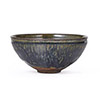
|
Lot: 612
D: 12.5 cm |
Estimate
240,000 - 360,000 7,600 - 11,500 59,000 - 89,000
|
Sold Price
264,000
8,253
64,078
|

|
Lot: 613
H: 8 cm |
Estimate
160,000 - 280,000 5,100 - 8,900 40,000 - 69,000
|
|

|
Lot: 614
2011 |
Estimate
700,000 - 900,000 22,300 - 28,600 173,000 - 222,000
|
Sold Price
840,000
26,258
203,883
|

|
Lot: 615
1981 |
Estimate
400,000 - 600,000 12,700 - 19,100 99,000 - 148,000
|
Sold Price
456,000
14,254
110,680
|

|
Lot: 616
Ink and color on paper |
Estimate
1,300,000 - 2,600,000 41,400 - 82,700 321,000 - 642,000
|
Sold Price
2,640,000
82,526
640,777
|

|
Lot: 617
H: 50.5 cm |
Estimate
360,000 - 500,000 11,500 - 15,900 89,000 - 123,000
|
Sold Price
552,000
17,255
133,981
|

|
Lot: 618
Ink and color on paper |
Estimate
320,000 - 440,000 10,200 - 14,000 79,000 - 109,000
|
|
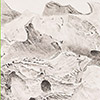
|
Lot: 619
2013 |
Estimate
500,000 - 700,000 15,900 - 22,300 123,000 - 173,000
|
Sold Price
600,000
18,756
145,631
|

|
Lot: 620
D: 16 cm |
Estimate
380,000 - 480,000 12,100 - 15,300 94,000 - 119,000
|
|

|
Lot: 621
D: 12.7 cm |
Estimate
120,000 - 160,000 3,800 - 5,100 30,000 - 40,000
|
Sold Price
132,000
4,126
32,039
|
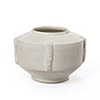
|
Lot: 622
H: 6 cm |
Estimate
360,000 - 500,000 11,500 - 15,900 89,000 - 123,000
|
|
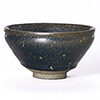
|
Lot: 623
D: 12 cm |
Estimate
800,000 - 1,200,000 25,500 - 38,200 198,000 - 296,000
|
|
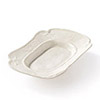
|
Lot: 624
L: 13.5 cm |
Estimate
4,600,000 - 6,000,000 146,400 - 191,000 1,136,000 - 1,481,000
|
Sold Price
5,520,000
172,554
1,339,806
|

|
Lot: 625
D: 11 cm |
Estimate
180,000 - 280,000 5,700 - 8,900 44,000 - 69,000
|
|

|
Lot: 626
D:12 cm |
Estimate
320,000 - 460,000 10,200 - 14,600 79,000 - 114,000
|
Sold Price
360,000
11,254
87,379
|
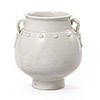
|
Lot: 627
D: 10.5 cm |
Estimate
700,000 - 900,000 22,300 - 28,600 173,000 - 222,000
|
|
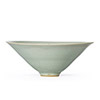
|
Lot: 628
D: 13.5 cm |
Estimate
360,000 - 500,000 11,500 - 15,900 89,000 - 123,000
|
|

|
Lot: 629
D: 10.8 cm |
Estimate
180,000 - 260,000 5,700 - 8,300 44,000 - 64,000
|
|

|
Lot: 630
H:10.3 cm |
Estimate
120,000 - 180,000 3,800 - 5,700 30,000 - 44,000
|
|
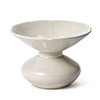
|
Lot: 631
H: 10.1 cm |
Estimate
700,000 - 900,000 22,300 - 28,600 173,000 - 222,000
|
|

|
Lot: 632
H: 9.5 cm |
Estimate
320,000 - 460,000 10,200 - 14,600 79,000 - 114,000
|
Sold Price
312,000
9,753
75,728
|

|
Lot: 633
H: 16 cm |
Estimate
320,000 - 480,000 10,200 - 15,300 79,000 - 119,000
|
|

|
Lot: 634
D: 10.5 cm |
Estimate
240,000 - 360,000 7,600 - 11,500 59,000 - 89,000
|
Sold Price
312,000
9,753
75,728
|

|
Lot: 635
D: 8.8 cm |
Estimate
480,000 - 600,000 15,300 - 19,100 119,000 - 148,000
|
|
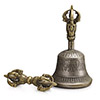
|
Lot: 636
Vajra Pestle L: 13.5 cm |
Estimate
180,000 - 260,000 5,700 - 8,300 44,000 - 64,000
|
|

|
Lot: 637
1994 |
Estimate
80,000 - 120,000 2,500 - 3,800 20,000 - 30,000
|
Sold Price
108,000
3,376
26,214
|

|
Lot: 638
H: 11.7 cm |
Estimate
500,000 - 800,000 15,900 - 25,500 123,000 - 198,000
|
|

|
Lot: 639
H: 9.3 cm |
Estimate
950,000 - 1,500,000 30,200 - 47,700 235,000 - 370,000
|
|

|
Lot: 640
H: 12.5 cm |
Estimate
650,000 - 900,000 20,700 - 28,600 160,000 - 222,000
|
Sold Price
600,000
18,756
145,631
|
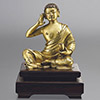
|
Lot: 641
H: 13 cm |
Estimate
1,500,000 - 2,600,000 47,700 - 82,700 370,000 - 642,000
|
|

|
Lot: 642
H: 17.5 cm |
Estimate
1,300,000 - 1,800,000 41,400 - 57,300 321,000 - 444,000
|
|

|
Lot: 643
H: 12.5 cm |
Estimate
1,300,000 - 1,800,000 41,400 - 57,300 321,000 - 444,000
|
|

|
Lot: 644
H: 15 cm |
Estimate
8,000,000 - 15,000,000 254,600 - 477,400 1,975,000 - 3,704,000
|
Sold Price
7,800,000
243,826
1,893,204
|
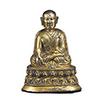
|
Lot: 645
H: 10 cm |
Estimate
650,000 - 900,000 20,700 - 28,600 160,000 - 222,000
|
|
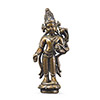
|
Lot: 646
H: 10 cm |
Estimate
550,000 - 800,000 17,500 - 25,500 136,000 - 198,000
|
|
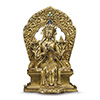
|
Lot: 647
H: 20.4 cm |
Estimate
1,200,000 - 1,800,000 38,200 - 57,300 296,000 - 444,000
|
|

|
Lot: 648
H: 20.5 cm |
Estimate
650,000 - 850,000 20,700 - 27,100 160,000 - 210,000
|
Sold Price
780,000
24,383
189,320
|
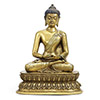
|
Lot: 649
H: 25.5 cm |
Estimate
2,000,000 - 3,600,000 63,700 - 114,600 494,000 - 889,000
|
|

|
Lot: 650
H:17 cm |
Estimate
600,000 - 900,000 19,100 - 28,600 148,000 - 222,000
|
|

|
Lot: 651
H: 18.2 cm |
Estimate
1,500,000 - 2,000,000 47,700 - 63,700 370,000 - 494,000
|
Sold Price
840,000
26,258
203,883
|

|
Lot: 652
90 x 71 cm |
Estimate
240,000 - 360,000 7,600 - 11,500 59,000 - 89,000
|
|

|
Lot: 653
H: 53 cm |
Estimate
1,200,000 - 1,800,000 38,200 - 57,300 296,000 - 444,000
|
Sold Price
1,440,000
45,014
349,515
|
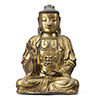
|
Lot: 654
H :47 cm |
Estimate
2,600,000 - 3,600,000 82,700 - 114,600 642,000 - 889,000
|
Sold Price
3,480,000
108,784
844,660
|
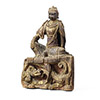
|
Lot: 655
H: 28 cm |
Estimate
900,000 - 1,600,000 28,600 - 50,900 222,000 - 395,000
|
|

|
Lot: 656
From 1965 |
Estimate
700,000 - 900,000 22,300 - 28,600 173,000 - 222,000
|
Sold Price
840,000
26,258
203,883
|
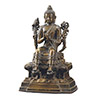
|
Lot: 657
H: 20.5 cm |
Estimate
1,300,000 - 1,800,000 41,400 - 57,300 321,000 - 444,000
|
|

|
Lot: 658
H:14.5 cm |
Estimate
800,000 - 1,200,000 25,500 - 38,200 198,000 - 296,000
|
|

|
Lot: 659
H:7.5 cm |
Estimate
240,000 - 360,000 7,600 - 11,500 59,000 - 89,000
|
|
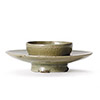
|
Lot: 660
D: 11.5 cm |
Estimate
30,000 - 50,000 1,000 - 1,600 7,000 - 12,000
|
Sold Price
48,000
1,500
11,650
|

|
Lot: 661
H: 21.5 cm |
Estimate
200,000 - 300,000 6,400 - 9,500 49,000 - 74,000
|
|

|
Lot: 662
H: 35 cm |
Estimate
460,000 - 600,000 14,600 - 19,100 114,000 - 148,000
|
|

|
Lot: 663
H: 49 cm |
Estimate
1,600,000 - 2,600,000 50,900 - 82,700 395,000 - 642,000
|
|

|
Lot: 664
L: 21 cm |
Estimate
80,000 - 120,000 2,500 - 3,800 20,000 - 30,000
|
|

|
Lot: 665
H: 28 cm |
Estimate
280,000 - 380,000 8,900 - 12,100 69,000 - 94,000
|
|
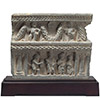
|
Lot: 666
H: 18 cm W: 22 cm |
Estimate
200,000 - 300,000 6,400 - 9,500 49,000 - 74,000
|
|

|
Lot: 667
H: 12 cm |
Estimate
100,000 - 200,000 3,200 - 6,400 25,000 - 49,000
|
Sold Price
120,000
3,751
29,126
|

|
Lot: 668
L: 107 cm |
Estimate
160,000 - 260,000 5,100 - 8,300 40,000 - 64,000
|
Sold Price
192,000
6,002
46,602
|

|
Lot: 669
L: 97 cm |
Estimate
80,000 - 160,000 2,500 - 5,100 20,000 - 40,000
|
|
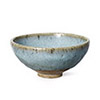
|
Lot: 670
D: 8.6 cm |
Estimate
50,000 - 80,000 1,600 - 2,500 12,000 - 20,000
|
|

|
Lot: 671
L: 44.5 cm |
Estimate
150,000 - 250,000 4,800 - 8,000 37,000 - 62,000
|
|
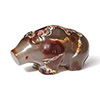
|
Lot: 672
L: 7.5 cm |
Estimate
300,000 - 500,000 9,500 - 15,900 74,000 - 123,000
|
|
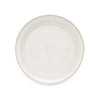
|
Lot: 673
D: 17.2 cm |
Estimate
480,000 - 600,000 15,300 - 19,100 119,000 - 148,000
|
Sold Price
660,000
20,631
160,194
|

|
Lot: 674
L: 55 cm |
Estimate
360,000 - 480,000 11,500 - 15,300 89,000 - 119,000
|
|

|
Lot: 675
D: 7 cm |
Estimate
160,000 - 260,000 5,100 - 8,300 40,000 - 64,000
|
|
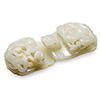
|
Lot: 676
L: 11 cm |
Estimate
850,000 - 1,000,000 27,100 - 31,800 210,000 - 247,000
|
|

|
Lot: 677
H: 78.5 cm |
Estimate
1,000,000 - 1,600,000 31,800 - 50,900 247,000 - 395,000
|
Sold Price
840,000
26,258
203,883
|

|
Lot: 678
H: 31 cm |
Estimate
500,000 - 800,000 15,900 - 25,500 123,000 - 198,000
|
|

|
Lot: 679
D: 20.5 cm |
Estimate
80,000 - 120,000 2,500 - 3,800 20,000 - 30,000
|
|

|
Lot: 680
H: 10 cm |
Estimate
50,000 - 80,000 1,600 - 2,500 12,000 - 20,000
|
Sold Price
60,000
1,876
14,563
|

|
Lot: 681
D: 20 cm |
Estimate
550,000 - 800,000 17,500 - 25,500 136,000 - 198,000
|
Sold Price
600,000
18,756
145,631
|
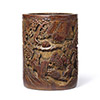
|
Lot: 682
H: 14.8 cm |
Estimate
650,000 - 950,000 20,700 - 30,200 160,000 - 235,000
|
|

|
Lot: 683
D: 14 cm |
Estimate
600,000 - 800,000 19,100 - 25,500 148,000 - 198,000
|
Sold Price
660,000
20,631
160,194
|

|
Lot: 684
2014 |
Estimate
100,000 - 160,000 3,200 - 5,100 25,000 - 40,000
|
Sold Price
120,000
3,751
29,126
|

|
Lot: 685
L: 8 cm |
Estimate
200,000 - 300,000 6,400 - 9,500 49,000 - 74,000
|
|

|
Lot: 686
L: 12 cm |
Estimate
120,000 - 180,000 3,800 - 5,700 30,000 - 44,000
|
Sold Price
180,000
5,627
43,689
|
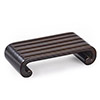
|
Lot: 687
L: 13 cm |
Estimate
160,000 - 280,000 5,100 - 8,900 40,000 - 69,000
|
|
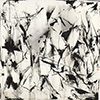
|
Lot: 688
Ink on paper |
Estimate
60,000 - 120,000 1,900 - 3,800 15,000 - 30,000
|
Sold Price
72,000
2,251
17,476
|
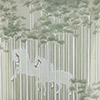
|
Lot: 689
2014 |
Estimate
100,000 - 180,000 3,200 - 5,700 25,000 - 44,000
|
Sold Price
108,000
3,376
26,214
|

|
Lot: 690
58 x 67 cm |
Estimate
40,000 - 60,000 1,300 - 1,900 10,000 - 15,000
|
Sold Price
48,000
1,500
11,650
|

|
Lot: 691
2011 |
Estimate
60,000 - 120,000 1,900 - 3,800 15,000 - 30,000
|
Sold Price
156,000
4,877
37,864
|

|
Lot: 692
H: 3 cm |
Estimate
220,000 - 320,000 7,000 - 10,200 54,000 - 79,000
|
|

|
Lot: 693
2016 |
Estimate
100,000 - 160,000 3,200 - 5,100 25,000 - 40,000
|
Sold Price
120,000
3,751
29,126
|